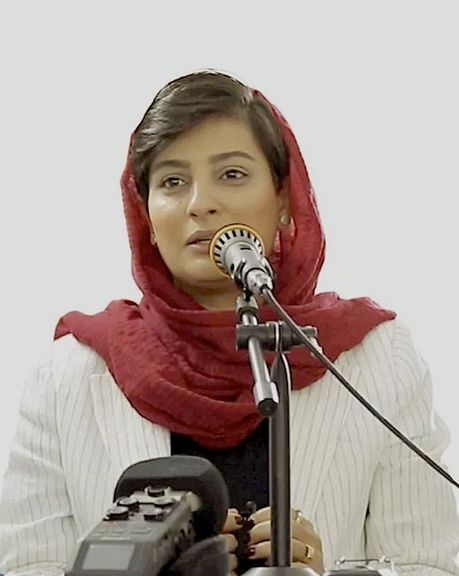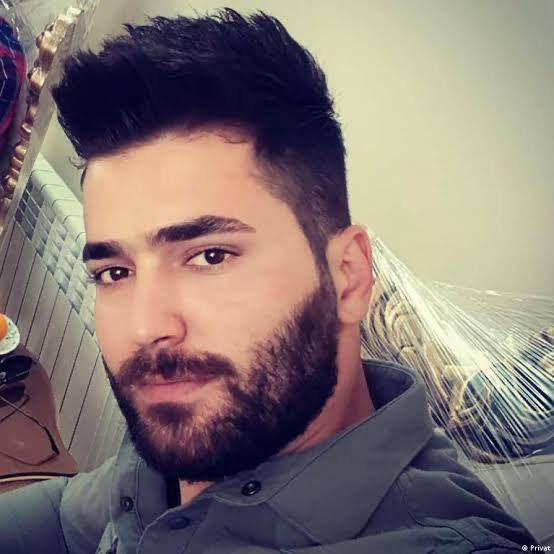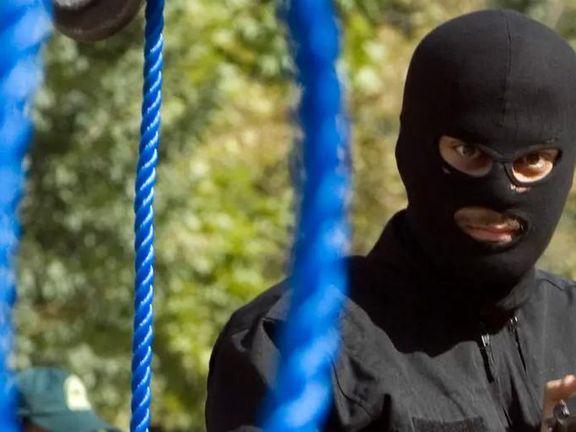Trial Of Journo Linked To Iran Protests Held Behind Closed Doors

The Iranian journalist who covered the death in custody of the icon of anti-regime protests, Mahsa Amini, went on trial on Monday behind closed doors.

The Iranian journalist who covered the death in custody of the icon of anti-regime protests, Mahsa Amini, went on trial on Monday behind closed doors.
The funeral of the 22-year-old Kurd was covered by Elaheh Mohammadi in the Kurdish city of Saqqez, where protests began in September.
Amini died while in the custody of Iran's morality police for allegedly violating the Islamic dress code, which unleashed a wave of protests across the country for months.
"The trial of Elaheh Mohammadi went well. The date of the next session will be announced by the court," her lawyer, Shahabeddin Mirlohi, told ILNA news agency on Monday.
As a result of their coverage of Amini's death, Mohammadi, a reporter for the pro-reform Hammihan newspaper, and Niloufar Hamedi, a journalist for the Sharq newspaper, have been accused of colluding with hostile powers. Under Islamic law, this charge carries the death penalty.
On Monday, Hammihan daily claimed legal procedures were being broken, calling the court's decision illogical.
In October, Iran's intelligence ministry and the IRGC accused Mohammadi and Hamedi of being CIA agents.
At a Tehran hospital where Amini was in a coma, Hamedi took a photograph of her parents hugging each other. Hamedi posted the image on Twitter as the first sign that all was not well with Amini in a chilling warning to her imminent death.
Hamedi's trial is scheduled to start on Tuesday.
Human rights groups have repeatedly called for a public trial for the two journalists, but the Islamic Republic has ignored them.

A cousin of one of three executed protesters in Isfahan says pressure is mounting on the family of one of three Iranians hanged in the regime's latest execution spree.
Mohammad Hashemi, who lives in Sydney and had been campaigning for Majid Kazemi's release, said in a tweet: “Kazemi's father's pension has been cut and his sister has also been fired from her workplace."
Hashemi claims that state agents arrested two brothers of Majid while they were severely injured, and they are still in custody.
According to Hashemi, the family was not allowed to hold a funeral for Majid, and they are still being monitored by Iranian authorities. It is a bid to further quash future protests, as the regime continues to face resistance since nationwide protests broke out in September following the death in custody of 22-year-old Mahsa Amini.
Majid Kazemi, Saeed Yaghoubi and Saleh Mirhashemi were convicted over the death of two IRGC’s Basij militia members and a police officer in protests of November last year, in what Persian media have dubbed the ‘Esfahan (Isfahan) House’ case.
The judiciary announced their execution in a statement on Twitter Friday morning, bringing to at least seven the number of protesters hanged since September.
The three were handed down the death sentence in a trial condemned as a travesty of justice by human rights campaigners, who say the prisoners were tortured into confessions, and there is no reliable evidence against them.

Iran may be quietly preparing for the politically risky move of raising fuel prices and selling gasoline at three different rates, Iran International has learned.
An informed source said that the government has notified gas stations to be ready for the implementation of the plan which will introduce a new ration at between 80 to 90 percent of gasoline spot prices in Persian Gulf countries, or at least 15 times higher than the current 3 US cents Iranians pay per liter.
Iran has the world’s second cheaper gasoline after Venezuela.
Such a sudden increase for gasoline, bought in addition to a 60-lter monthly ration, can cause unrest following the longest nationwide protests that shook the country in the closing months of 2022.
Iran International has also learned that security organizations have been preparing for possible protests and ready to confront any unrest.
Software required for the calculation of prices based on the use of digital ration cards have been updated at all gas stations and banks have taken the required measures for processing the payments during the past one year, he said.
The sources also said a new plan introduced in Urumieh, capital of West Azarbaijan Province, is in preparation and a prelude to the implementation of the new measures.
Ahmad Mojarad, managing director of the government-owned Oil Products Distribution Company of Urumieh, told the official news agency IRNA Sunday that digital gasoline rationing cards in Orumieh will be charged with 210 liters per month (60 liters at the subsidized rate of 15,000 rials and an extra 150 liters at 30,000).
Therefore, anyone who needs to use more than 55.5 gallons a month has to pay a price close to international rates, while Iranians have been impoverished by a 70-percent annual inflation rate.
The government has not announced any new rationing plans yet but in March, just days after Iran International reported that national reserves were down to five-days’ supply, the CEO of the National Iranian Oil Refining and Distribution Company, Ali-Akbar Nejad-Ali, urged people to reduce gasoline consumption.
The semi-official Iranian Students News Agency (ISNA) reported then that the average consumption of gasoline between March 11 and 20 stood at 121.8 million liters, up by 13.9% in comparison to the same period the year before.
Gasoline was first rationed during the Iran-Iraq War (1980-1988) when paper coupons were required for its purchase.
In 2007, introduction of digital fuel ration cards by the government of President Mahmoud Ahmadinejad caused unrest in some cities including the capital Tehran where several gas stations were burned down by angry protesters. At this stage rationed subsidized gasoline was sold at 1,000 rials per liter and extra fuel cost 4,000. These prices were raised to 7,000 and 10,000 in 2014 by the administration of his successor, President Hassan Rouhani.
In 2015, two years after the nuclear deal with world powers, officially known as the Joint Comprehensive Plan of Action (JCPOA), rationing and two-price plan were removed by the government which argued that these caused corruption and gasoline began to be sold at 10,000.
When sanctions slapped on Iran in 2018 by the administration of the US President Donald Trump began to bite, rationing and the two-price system had to resume. This time, the subsidized rate rose to 15,000 rials for 60 liters per month and additional fuel was priced at 30,000.
After months of rumors, the government abruptly announced the new plans on November 14, 2019. By the evening of the same day, protesters had taken to the streets in several cities including Ahvaz, Mashhad and Shiraz and one protester was killed in Sirjan.
Protests which authorities very heavy-handedly suppressed, soon spread across the country, and lasted for almost a week.
The government never released any figures on the death toll or announced the number of protesters arrested by security forces. Reuters at the time reported 1,500 deaths.

Dadban, a group of pro-bono lawyers in Iran defending political prisoners and rights activists, has warned about the potential execution of three young men in Tehran.
In a report Friday, Dadban said the three young men – Milad Armoun, Mehdi Hosseini and Alireza Kafaei -- have been charged with Muhariba (pronounced moharebeh in Persian) for the killing of a 21-year-old Basiji militia member named Arman Aliverdi in Tehran’s Ekbatan neighborhood October 26 amid nationwide protests.
Muhariba is an Islamic-Arabic term that in the lexicon of the Iranian regime means bearing arms and “fighting God” or “waging war against God,” and carries the death penalty.

A video circulating on social media at the time showed Aliverdi bleeding from the face and head while a protester kicked him. He later died in hospital. Authorities claim protesters also stabbed him.
Defendants in the case have denied stabbing Aliverdi who the residents of Ekbatan say had been trying to infiltrate the protesters to identify their leaders.
A young woman, who identifies herself as Aidi and runs the neighborhood’s popular Twitter account, told Iran International that the case is still under investigation and the accused have not been sentenced yet.
According to Payam Dorfeshan who represents one of the defendants in the case, the accused were tortured to confess to Aliverdi’s killing and implicate each other, Dadban said.
It also reported three other defendants, Mehdi Hosseini, Hossein Nemati and another yet unnamed young man apparently arrested in Ahvaz recently, have been charged with “complicity in murder” and “propaganda against the regime”.
After the incident, security forces from various agencies carried out many raids in Ekbatan and arrested at least fifty young protesters. Fourteen of the detainees were eventually indicted but others were freed later for lack of any evidence of their involvement in Aliverdi’s killing.
Dadban quoted Dorfeshan as saying that security forces’ violent daytime and night raids in Ekbatan were meant to arrest defendants and other protesters and instill fear among the residents.
The west Tehran neighborhood was an epicenter of protests ignited by the death of Mahsa Amini, the 22-year-old woman who was fatally injured in September 2022 while in police custody following her arrest for not wearing “proper” hijab.
“These raids have seriously affected the mental health of the residents, particularly children.There are reliable reports about sleep disturbance and nightmares among children after these raids. Their drawings also show violent scenes as a result of [witnessing] the raids,” he said.
During the heat of the protests, Basij militiamen and officers of various intelligence and security forces in plainclothes attacked chanting young people who marched in small groups around the blocks of apartments in Ekbatan.

Basijis and other security forces on several occasions shot at people’s windows indiscriminately, rampaged the entrance lobbies in several blocks, broke the windows, and destroyed the lobby furniture and intercoms to give the residents a lesson.
The ever-present Basij have four bases within the five square kilometer complex which has 15,500 apartments and a population of around 45,000.
Regime forces often used tear gas, shot pellets at protesters for chanting “Death to Khamenei” and “Down with the Dictator” every night, and made arrests both outside and inside the buildings.

A 16-year-old Iranian boy, who was shot deliberately by regime forces during protests, succumbed to his injuries after eight months.
Abolfazl Amir-Ataei died Saturday after enduring great suffering from a severe head injury amid protests in Shahr-e Ray south of Tehran during Iran’s “Woman Life Freedom” movement.
Informed sources told the Hegaw Human Rights Organization that Amir-Ataei was shot in close range by government forces, with a tear gas projectile striking him from a meter away, causing a critical injury and shattering his skull.
He underwent several major surgeries, and finally, on May 21, his mother published a video showing that he could move his fingers and react to his mother's words; however, in less than a week he passed away.
Abolfazl was taken to the hospital the same day after being hit, but some relatives of the teenager said government agents forced his family not to complain to any institution.
The young man’s mother, who endured the excruciating pain caused by Abolfazl’s injuries, posted an image of her son on Instagram, saying "my moon vanished, I wish demise of yours too".
During the protests following the death in custody of Mahsa Amini in September, hundreds of children and teenagers were killed, injured, and thousands imprisoned by the regime.
Human rights organizations identified at least 70 children and teenagers killed during the protests.
The underage protesters were killed by direct shots to their heart and head or being beaten by the regime forces.
As the number of children killed in the protests increased, "Death to the Child-killing Regime" turned into one of the main slogans in street rallies or chanted over rooftops.

Over 80 families of those killed by the Iranian regime called for immediate global action to stop the recent execution spree in Iran.
In a statement on Saturday, the petitioning families called the recent wave of executions in Iran a revenge by the Islamic Republic on the people for anti-regime protests.
They also called on all activists and organizations defending human rights in the world to do their best to end the death penalty in Iran and save the lives of prisoners at risk.
“Suffering from the deep wounds of losing our loved ones, whether on the street or at the gallows, we cry out to stop the executions and killings of people. End all death sentences immediately. Executions for any reason and for any crime must be stopped. We don't let you kill our loved ones anymore,” read the statement.
The wave of executions carried out by the Islamic Republic in recent weeks has led to yet another global outcry against the Iranian regime.
After the execution of Majid Kazemi, Saeed Yaqoubi and Saleh Mirhashmi, three protesters imprisoned in Isfahan (Esfahan) on May 19, people in different Iranian cities took to the streets and chanted slogans, burning symbols of the regime to express their determination to overthrow the clerical rulers.
Iranian expats in different countries also held protest rallies against the Islamic Republic on May 20, to slam the recent wave of executions in Iran which has taken the lives of 110 people in the past month.